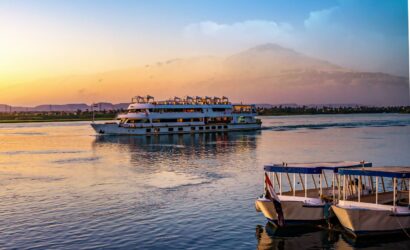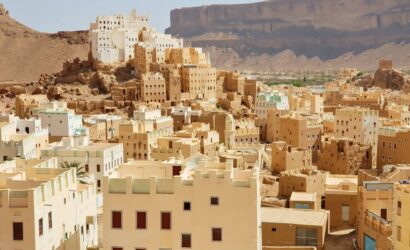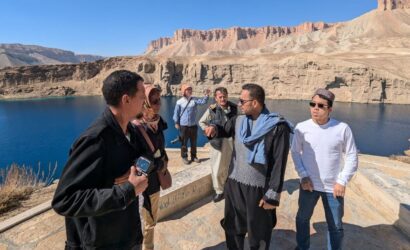Embark on a remarkable 10-day journey across Saudi Arabia, exploring the Kingdom’s most captivating destinations—all without the need for flights. This overland adventure takes you from the bustling capital of Riyadh to the vibrant port city of Jeddah, stopping at ancient heritage sites, stunning rock formations, and UNESCO-listed wonders along the way. Ideal for those who crave an immersive experience, this tour offers a blend of history, culture, and natural beauty as you traverse Saudi Arabia by road.
- Day 1 » 45KM » Riyadh Arrival » Airport Meet & Greet » Hotel transfer
- Day 2 » 205KM » Riyadh full-day city tour » Sunset at Edge of the World » Riyadh
- Day 3 » 390KM » Riyadh » Ushaiger Heritage Village » Buraydah
- Day 4 » 510KM » Buraydah » Jubbah Petroglyphs » Hail
- Day 5 » 428KM » Hail » AI UIa
- Day 6 » 50KM» AlUla » Dadan and Lion Tombs » Jabal Ikmah » Hegra (Madain Saleh) » Elephant Rock » Night in desert camp
- Day 7 » 487KM » Hegra » Yanbu Al-Nakhl » Yanbu
- Day 8 » 340KM » Yanbu city tour » Jeddah
- Day 9 » Jeddah full-day city tour
- Day 10 » Departure from Jeddah » Airport Transfer
Why Overland Travel in Saudi Arabia?
Overland travel provides a richer, more engaging experience for those who want to fully explore and appreciate the landscapes and cultures of each region, while flying may suit those looking for speed and convenience over immersive experiences.
| Cons of Flying | Pros of Overland Travel |
|---|---|
| Limited Scenic Experience: Flying skips landscapes, missing out on natural and cultural scenery. | Immersive Scenery: Traveling by land allows you to experience the changing landscapes, local villages, and diverse ecosystems along the way. |
| Rushed Experience: Airport procedures, security checks, and boarding can be time-consuming and stressful. | Relaxed Pace: Overland travel can offer a slower, more relaxed pace, allowing for spontaneous stops and exploration. |
| Environmental Impact: Flights have a significant carbon footprint, contributing to pollution. | Eco-Friendlier: Traveling overland generally has a lower environmental impact, especially if done in fuel-efficient or shared vehicles. |
| Less Interaction: Limited opportunities to meet locals or experience the culture between destinations. | Cultural Engagement: Overland journeys often pass through towns and villages, providing opportunities to interact with locals and experience regional customs. |
| Luggage Restrictions: Airlines often limit baggage weight and restrict certain items. | Flexible Packing: Overland travel typically allows for more flexible packing, reducing concerns over luggage weight and restrictions. |
| Potential for Delays: Flights are susceptible to delays due to weather, technical issues, or scheduling conflicts. | More Predictable Timing: With overland travel, delays are often less frequent and more manageable, as there is greater control over timing and breaks. |
| Disconnect from Destination: Flying can make destinations feel disconnected, with less sense of continuity between places. | Sense of Journey: Traveling by land provides a greater sense of continuity and a gradual immersion into new environments and cultures. |
-
Riyadh
-
Jeddah
-
Included
-
Included
-
Included
-
Breakfast, dinner
-
Riyadh, Ushaiqer, Buraydah, Hail, Jubbah, AlUla, Hegra, Yanbu, Jeddah
Saudi Arabia Itinerary
Arrive in Riyadh on Day 1, where you’ll be warmly welcomed and transferred to your hotel in a comfortable, private luxury vehicle for check-in. Take the evening to settle in, soak up the city’s ambiance, and prepare for the start of your adventure across Saudi Arabia.
On Day 2, begin your exploration of Riyadh with a visit to Murabba Historical Palace, the former home of King Abdulaziz. Admission here is free, and the palace’s traditional Najdi architecture offers an immersive look into Saudi Arabia’s early history and culture. Next, explore the Al Masmak Palace, another significant heritage site with free entry, symbolizing the unification of the Kingdom. Inside, exhibits recount pivotal moments in Saudi history, such as the famous 1902 battle led by King Abdulaziz, providing a deeper understanding of the country’s formation.
Following these historical insights, head to the lively Diraq Souq (free to enter), where you can explore a traditional market filled with textiles, spices, handicrafts, and other local goods. Engage with vendors and experience the vibrant atmosphere, making it an excellent stop to appreciate Saudi culture up close. A short drive away, Diriyah awaits—a UNESCO site in Saudi Arabia, and the birthplace of the Saudi state. For 100 SAR (approximately $27 USD), you can walk through restored clay-brick structures and narrow alleyways that echo with stories of the past, showcasing traditional Najdi architecture.
In the afternoon, continue to the SkyBridge at Kingdom Centre Tower for 60 SAR (approximately $16 USD), where you’ll enjoy panoramic views of Riyadh’s mix of historical landmarks and modern skyscrapers. Finally, venture to the dramatic Edge of the World cliffs, a must-see location outside Riyadh. Watch the desert sunset and witness breathtaking views over the vast expanse of dunes, creating unforgettable memories.
On Day 3, depart from Riyadh and embark on a journey to Buraydah, with an enriching stop at the historic Ushaiger Heritage Village along the way. Situated around 200 kilometers northwest of Riyadh, Ushaiger is one of Saudi Arabia’s best-preserved heritage villages, offering visitors a rare opportunity to step back in time and experience the traditional way of life that has characterized this region for centuries. Entry to Ushaiger is free, making it an accessible and invaluable cultural experience.
As you arrive at Ushaiger, you’ll be greeted by the village’s characteristic mud-brick houses and narrow, winding lanes. The structures showcase the unique Najdi architectural style, with intricately carved wooden doors, airy courtyards, and traditional latticework windows that allow light to filter through. Walking along these paths, you’ll pass palm groves and ancient wells, reminders of the oasis life that has sustained the village through the generations. The name “Ushaiger” itself translates to “small blonde,” a reference to the nearby reddish sandstone mountain that frames the village, adding to its picturesque charm.
Ushaiger is more than just preserved buildings; it’s a living museum of Saudi Arabian heritage. In the heart of the village, explore small museums filled with artifacts, tools, and traditional clothing that paint a vivid picture of daily life in early Saudi Arabia. Meet local residents who often share stories of the village’s rich history and their families’ deep roots in the area. Highlights include the Ushaiger Mosque, one of the oldest mosques in the region, and market stalls offering handmade crafts and local foods, which provide an authentic taste of the past.
After immersing yourself in the quiet charm and historic atmosphere of Ushaiger, continue onward to Buraydah, where you’ll settle in for an overnight stay, enriched by the sense of tradition and history that Ushaiger so beautifully preserves. This stop not only provides insight into Saudi Arabia’s architectural and cultural heritage but also offers a tranquil pause in the journey through the Saudi heartland.
On Day 4, embark on a captivating journey from Buraydah to Hail, traversing Saudi Arabia’s rugged and ancient landscapes. Your day begins with a visit to the Aloqilat Museum in Buraydah, an institution that represents the rich cultural heritage and legacy of the Saudi people in the region. The museum preserves thousands of years of history, showcasing artifacts and narratives that highlight the achievements of past civilizations. A notable part of this experience is the exhibit dedicated to the First Ladies of Abdullatif Al Allah idzah, which delves into the historical roles of women in the region. The exhibit starts with a warm hospitality experience and offers a tour of the museum, sharing stories that connect past to present, and providing a unique insight into the social and cultural evolution of the area.
After immersing yourself in the historical treasures of the Aloqilat Museum, continue your journey towards Jubbah Petroglyphs, a site of profound cultural significance and a designated Saudi Arabia UNESCO site. Located north of Hail in the expansive desert plains, the Jubbah Petroglyphs are some of the oldest rock carvings in the Arabian Peninsula, dating back up to 10,000 years. For an entry fee of 100 SAR (about $27 USD), you’ll explore intricate carvings etched into the sandstone by early inhabitants. These petroglyphs depict scenes of hunting, ceremonial rituals, and daily life, illustrating interactions with animals and the natural environment. You’ll see depictions of camels, ibexes, and human figures in ceremonial poses, providing a unique glimpse into the beliefs and lives of the region’s ancient societies.
Walking among the petroglyphs, you’ll feel transported back in time, connecting with the spiritual and artistic expressions of early cultures in Saudi Arabia. This journey through the Jubbah Petroglyphs offers not only a view into ancient artistry but also a deeper understanding of the lives and environments of those who inhabited these lands millennia ago. After this enriching exploration, continue to Hail, with the vivid impressions of Jubbah’s ancient carvings and the Aloqilat Museum’s cultural narratives enriching your understanding of Saudi Arabia’s historical legacy.
On Day 5, embark on a scenic journey from Hail to AlUla, covering approximately 428 kilometers through Saudi Arabia’s breathtaking northern landscapes. This drive follows Highway 70, a route that winds through vast open desert, rocky terrain, and sandstone formations unique to this region. Expect striking desert vistas and a sense of solitude as you traverse one of Saudi Arabia’s more remote highways, with wide, open stretches that make for a tranquil, meditative experience.
As you approach AlUla, about 94 kilometers before the city, turn off the main road for an unforgettable stop to see the famous Mushroom Rock. This natural formation, shaped like a mushroom with a narrow “stem” supporting a broad “cap,” is tucked into the desert landscape, requiring a short off-road journey to reach it. The Mushroom Rock is a striking example of the natural forces that have sculpted AlUla’s terrain over millennia, creating surreal rock shapes that seem almost otherworldly.
This stop offers a chance to stretch your legs, capture dramatic photos, and experience the quiet beauty of the desert firsthand. You’ll feel immersed in the landscape as you explore the sandstone’s textures and colors up close, surrounded by the silence and expanse of the desert. From Mushroom Rock, continue toward AlUla, where the scenery gradually shifts, welcoming you into an ancient oasis city renowned for its history and awe-inspiring geology. This day promises both the thrill of discovery and the serene beauty of Saudi Arabia’s vast desert horizons.
On Day 6, prepare for an extraordinary journey through the historical and natural marvels of AlUla. Begin at Dadan and the Lion Tombs (entry fee: 100 SAR, approx. $27 USD), the ancient capital of the Dadanite and Lihyanite Kingdoms. Here, you’ll find rock-carved tombs that include the famous Lion Tombs, marked by lion sculptures symbolizing protection and strength. These ancient burial sites offer a fascinating look at the customs and artistry of civilizations that thrived in the Arabian Peninsula thousands of years ago.
Next, visit Jabal Ikmah, included in the Dadan entry fee, known as an “open-air library.” Jabal Ikmah’s cliffs are adorned with inscriptions in ancient scripts like Dadanitic and Thamudic, revealing early Arabian beliefs, laws, and customs. Walking along these inscribed rocks, you’ll uncover personal and cultural expressions that bring the region’s history vividly to life.
Continue your exploration at Hegra (Madain Saleh), Saudi Arabia’s first UNESCO World Heritage site and a testament to the grandeur of the Nabatean civilization. Entry to Hegra is 200 SAR (approx. $53 USD). At this site, you’ll explore nearly 100 monumental rock-cut tombs, each carved from sandstone cliffs and decorated with intricate facades that reflect Nabatean architectural mastery. The tombs’ inscriptions provide insight into the individuals buried here, showcasing the elaborate funerary practices of the Nabateans.
In the late afternoon, visit the remarkable Elephant Rock, a free-access natural sandstone formation resembling a giant elephant with its “trunk” extending toward the ground. This formation is particularly photogenic during sunset, when the sun’s warm light accentuates the rock’s vibrant hues. The surrounding desert landscape offers a peaceful setting to relax and take in the beauty of nature.
As evening falls, make your way to a desert camp for an unforgettable overnight experience. Here, you’ll enjoy Bedouin hospitality, savoring authentic local cuisine and tea while seated around a campfire. As the stars fill the sky, take the opportunity for stargazing in the clear desert night, creating a serene and magical end to a day filled with cultural, historical, and natural discoveries.
On Day 7, travel from AlUla to Yanbu, with a memorable pause at the Yanbu Al-Nakhl Oasis, a location rich in historical and cultural significance. This oasis, which has thrived for over 2,000 years, is a vital portal of history in western Saudi Arabia. Known as a key commercial center, Yanbu Al-Nakhl was a crucial stop for trade caravans and pilgrim convoys moving between Sham and Mecca, playing a central role along the ancient trade and pilgrimage routes. Its name, “Yanbu,” is derived from the springs abundant here centuries ago; historical accounts mention more than 99 springs, which nourished the lush date palms that spread across the oasis villages, extending even to the shores of the Red Sea.
The oasis is also steeped in Islamic history, with stories of traders, pilgrims, and significant events rooted in its landscape. The palm groves and natural springs became landmarks on the ancient routes, especially as Islam spread and pilgrims journeyed through this fertile land. One notable structure is a castle built by the soldiers of Mohammad Ali Pasha, a reminder of the oasis’s strategic importance. Historical records recount how the local Bani Qhi tribe (al-Yahyioui) and other tribes clashed with Ottoman forces stationed here, leading to a fierce conflict in 1255 H, with heavy casualties and eventual retreat of the military within the village walls.
As you explore the oasis, surrounded by date palms and ancient wells, take in the tranquility and imagine the bustling life it once supported, from traders and pilgrims to soldiers and settlers. This peaceful and culturally rich stop offers a unique glimpse into Saudi Arabia’s past before you continue your journey to Yanbu for an evening arrival and overnight stay.
On Day 8, immerse yourself in the charm of Yanbu’s Historic District, a free-access area that transports you to a bygone era with its beautifully preserved architecture and narrow alleyways. Stroll through traditional buildings, many of which reflect Hejazi architectural styles with intricate wooden balconies and coral stone facades, each structure whispering stories of the traders, fishermen, and pilgrims who once called this port city home. Yanbu’s history is woven into the fabric of these buildings, making it an ideal place for leisurely exploration.
As you finish exploring the Historic District, head over to Al-Bahr Corniche along the Red Sea, where you can soak in the stunning coastal views. The Corniche offers a peaceful promenade lined with scenic lookouts, parks, and shaded areas perfect for a relaxing seaside stroll. Enjoy the gentle sea breeze and perhaps spot local fishing boats bobbing on the water, connecting you to Yanbu’s maritime heritage.
After lunch, continue your journey to Jeddah, a city known for its blend of history, culture, and modernity. Upon arrival, check into your hotel and take the evening to relax or begin acquainting yourself with Jeddah’s unique coastal ambiance as you prepare for further exploration the next day.
On Day 9, enjoy a full-day tour exploring the vibrant city of Jeddah, renowned for its rich cultural heritage, unique architecture, and coastal charm. Begin your day in Al-Balad, Jeddah’s historic district and a UNESCO World Heritage site. Wander through narrow lanes lined with coral stone buildings and traditional homes featuring intricately carved wooden balconies. Al-Balad’s souks, with their vibrant displays of spices, textiles, and traditional crafts, offer a glimpse into the daily life of this centuries-old trading port.
Next, visit Al Tayebat International City, an expansive museum that showcases Saudi Arabia’s diverse cultural heritage. For 94 SAR (approximately $25 USD), immerse yourself in exhibits spanning the history of Islam, Saudi Arabia, and the broader Arabian Peninsula. With over 60,000 artifacts, including ancient manuscripts, regional costumes, and relics, Al Tayebat provides an in-depth look at the traditions and customs that have shaped Saudi culture.
In the afternoon, head to Jeddah Corniche along the Red Sea, where palm-lined pathways, scenic views, and public art create a lively and relaxing seaside environment. Here, you’ll visit the Floating Mosque, an architectural marvel that appears to rest on the water at high tide, offering a serene spot for reflection. Continue along the Corniche to see the Jeddah Sign, a popular landmark perfect for photos.
As the day winds down, witness the stunning King Fahd Fountain, the tallest fountain in the world, which jets water up to 312 meters into the air. The fountain’s illuminated evening display provides a mesmerizing end to your day in Jeddah, capturing the city’s blend of tradition and modernity. Return to your hotel in the evening, having experienced the rich sights and sounds of Jeddah’s historical and coastal beauty.
On Day 10, your Saudi journey concludes with a seamless transfer from your hotel in Jeddah to King Abdulaziz International Airport. To ensure you arrive 3 hours before your flight, you’ll depart from the hotel approximately 3.5 to 4 hours before your departure time in a comfortable, luxury private transfer. This timing allows for a 30 to 45-minute drive to the airport, accounting for any potential traffic, and provides ample time for check-in and security.











